To identify voile fabric, look for its lightweight and semi-sheer qualities. Voile often has a soft, silky texture and a smooth finish due to its high thread count. It's typically made from 100% cotton but can also come in silk, polyester, and rayon varieties. When you hold it up to the light, you'll notice its slight transparency, making it perfect for layering. Additionally, voile is stable and non-stretchy, which keeps its shape well. If you want to learn more about selecting the right type for your projects, there are plenty of insights waiting to be explored.
Pronunciation of Voile
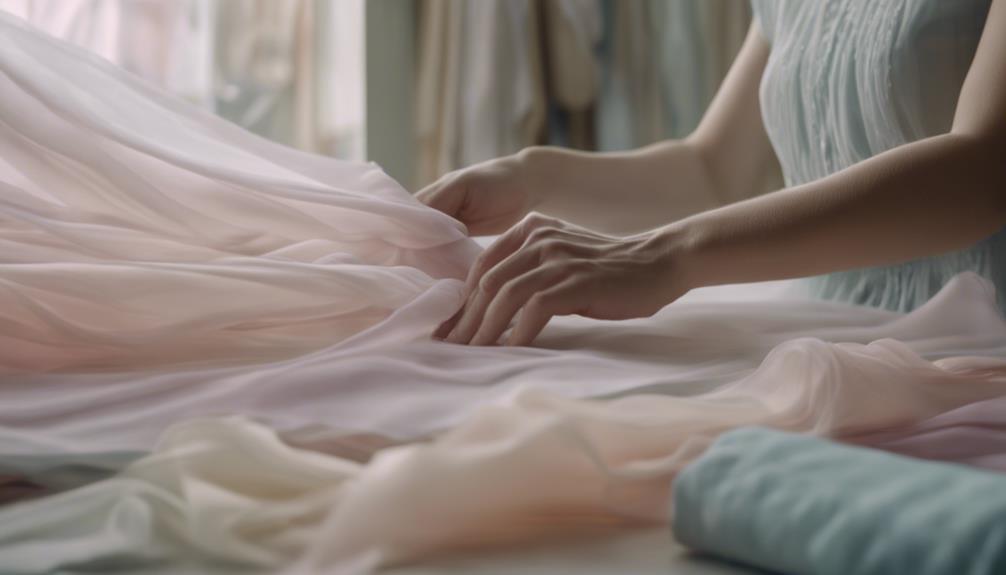
When you come across the term "voile," you might wonder how to pronounce it correctly. This French word, meaning "veil," refers to a soft fabric known for its lightweight and semi-sheer qualities. You'll find that the common pronunciations of voile are "vwal," which rhymes with "mall," and "voil," which rhymes with "toil." Both variations are widely accepted, so you can use either without worrying too much about the right one.
It's important to note that many people mistakenly say "voiley," but that's not correct. When you're in a fabric store or chatting with fabric enthusiasts, using "vwal" or "voil" will get your point across. Fabric professionals are well aware of this term and its association with the airy, delicate characteristics that make voile a popular choice for curtains, blouses, and other lightweight garments. Understanding how to pronounce voile correctly can help you communicate more effectively about this elegant fabric. So, next time you're discussing sewing projects or fabric options, feel confident in your pronunciation and enjoy exploring the versatility of voile!
Characteristics of Voile Fabric
The allure of voile fabric lies in its unique characteristics that make it a favorite among sewists and designers alike. This lightweight fabric is typically made from 100% cotton, giving it a soft, silky texture that drapes beautifully. You'll appreciate the higher thread count and tighter weave, which contribute to its smooth finish and breathable quality—perfect for warm weather garments or sheer curtains.
Voile is slightly transparent, making it ideal for layering in your sewing projects. Whether you're creating a flowing dress or delicate home decor, this fabric adds elegance without overwhelming your design. You'll find that it's stable and non-stretchy, which helps it maintain its shape, making it an excellent choice, especially if you're a beginner.
While it's often confused with similar lightweight fabrics like cotton lawn and batiste, remember that cotton voile is generally softer and smoother than lawn, while offering a bit less sheerness than high-quality batiste. Recognizing these characteristics will help you identify voile fabric and understand why it's such a beloved option in the world of sewing.
Types of Voile Fabric
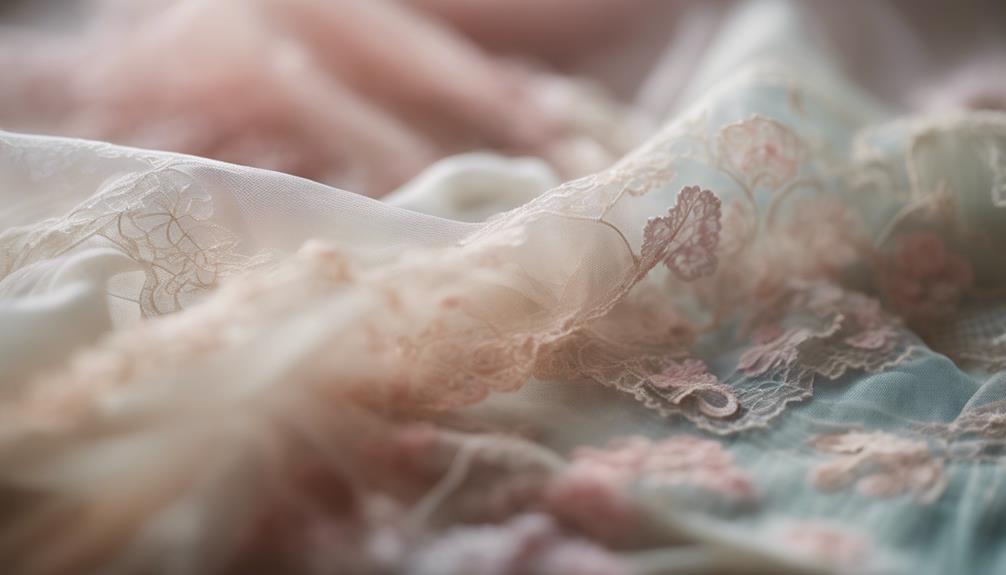
Exploring the various types of voile fabric can open up a world of possibilities for your sewing projects. Each type offers unique benefits, making it essential to choose the right one for your needs.
| Type of Voile Fabric | Key Features |
|---|---|
| Cotton Voile | Known for breathability, soft hand, and vibrant color retention; perfect for summer garments. |
| Silk Voile | Luxurious sheen and smooth feel; ideal for formal attire due to its elegant drape. |
| Polyester Voile | Durable and wrinkle-resistant; affordable and great for easy-care garments. |
| Rayon Voile | Lightweight and smooth, perfect for casual wear and layering pieces. |
Cotton Voile is the most common, celebrated for its breathability and soft texture. Silk Voile elevates any outfit with its luxurious appearance, while Polyester Voile offers practicality without sacrificing style. Rayon Voile combines comfort and versatility, making it perfect for everyday wear. Finally, Linen Voile brings an airy quality and rustic touch, perfect for summer clothing. Each type enhances your creations, so consider your project's needs when selecting the right Voile Fabric.
Common Uses of Voile
Voile's versatility makes it a favorite choice for various applications in fashion and home decor. This lightweight, semi-sheer fabric not only adds elegance but also offers functionality. You'll find that voile fabrics are commonly used in several ways:
- Curtains and Drapes: Voile's semi-sheer quality allows natural light to filter through while maintaining privacy, making it perfect for window treatments.
- Work Blouses: Women often choose voile for work blouses due to its breathability, offering a polished look that's comfortable to wear throughout the day.
- Dresses and Nightgowns: The soft drape of voile enhances feminine silhouettes, making it a popular choice for elegant dresses and cozy nightgowns.
- Lingerie: Lightweight and breathable, voile contributes to the comfort and style of lingerie, allowing for delicate designs that feel great against the skin.
Whether you're dressing up for the office or relaxing at home, voile's unique properties make it an ideal fabric for layering and adding texture without bulk. Embrace the versatility of voile, and you'll discover how it elevates your wardrobe and living spaces.
Differences Between Voile and Other Fabrics
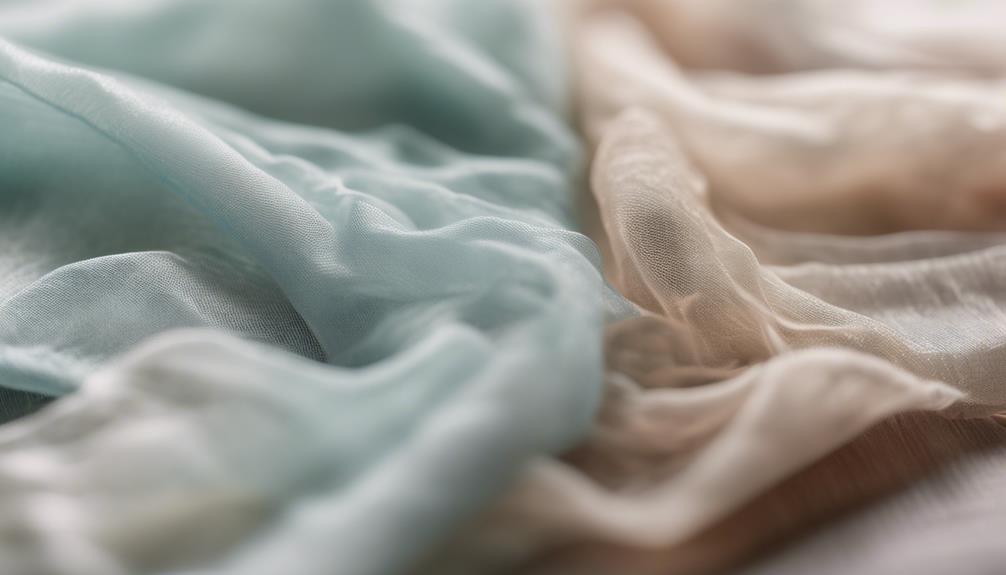
When comparing fabrics, you'll quickly notice that voile stands out due to its unique qualities. Unlike cotton lawn, which is crisper and less sheer, voile offers a smoother and softer texture, making it ideal for draping. You'll appreciate how voile's transparency allows for layering in your clothing designs, giving you more creative freedom.
If you look at high-quality batiste, you'll find it generally more sheer than voile. However, while batiste provides a finer finish, voile's higher thread count results in a soft hand and a slight sheen that mimics silk. This makes it a popular choice for lightweight garments, balancing both elegance and practicality.
You might also consider muslin, but it's coarser and lacks the sheer quality that distinguishes voile. Voile's slight crispness and breathable nature enhance its appeal, especially in warmer weather. To conclude, whether you're choosing fabric for a flowing dress or delicate curtains, understanding these differences will help you appreciate why voile is often preferred over other cotton fabrics.
Sewing Tips for Voile
Sewing with voile can be a rewarding experience, especially for beginners enthusiastic to work with lightweight fabrics. Voile is stable and doesn't stretch, making it an excellent choice for novice sewists. Here are some essential tips to guarantee your sewing project goes smoothly:
- Pre-wash your fabric: Always pre-wash your voile on a warm cycle and dry it on medium. This helps account for potential shrinkage and maintains high quality.
- Pin generously: Due to its slightly slippery nature, frequent pinning is vital. This will prevent the fabric from shifting during cutting and sewing.
- Choose the right needle: Use a universal needle for most projects, but opt for a smaller needle if you're working with tighter weaves to avoid damaging the fabric.
- Iron carefully: Voile is easy care, but be cautious when ironing. Use steam to remove creases and avoid high heat to maintain the integrity of the fabric.
Caring for Voile Fabric
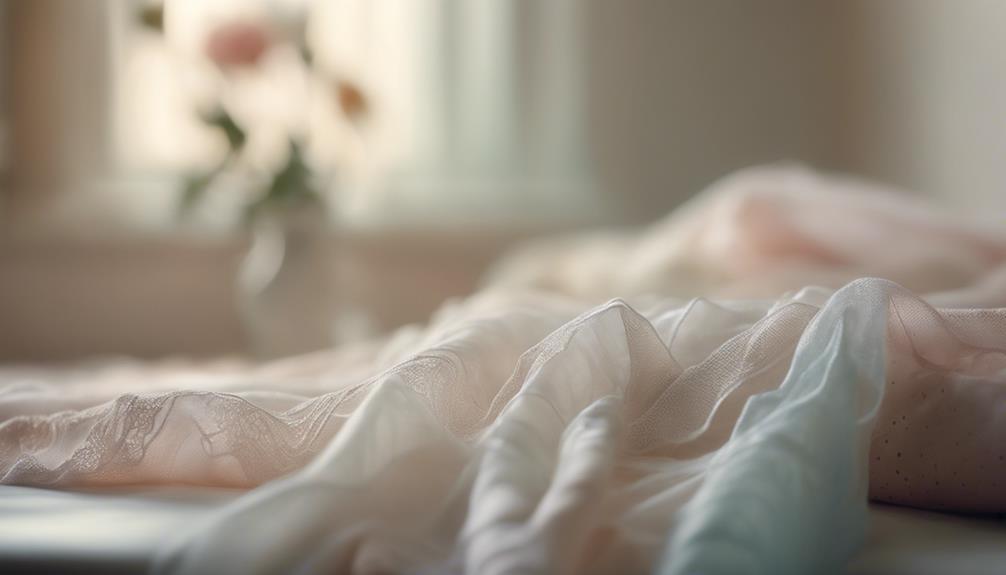
Taking care of voile fabric is essential to keeping it looking beautiful and feeling soft. To maintain its integrity, always wash it on a gentle cycle in cold water. High temperatures can lead to shrinkage and loss of softness, so opt for air drying instead of using the dryer. When you need to iron, set your iron to a low heat and use a press cloth to protect the delicate fibers from damage.
Here's a quick reference table for caring for voile:
| Care Task | Instructions |
|---|---|
| Washing | Gentle cycle, cold water |
| Drying | Air dry; avoid dryer |
| Ironing | Low heat with a press cloth |
| Bleach | Avoid using bleach or harsh chemicals |
| Storage | Store voile in a cool, dry place |
How to Buy Voile
Buying voile fabric can be a delightful experience, especially with its vast array of prints and colors. When you're ready to make a purchase, keep these tips in mind to guarantee you get high-quality cotton voile:
- Visit a Fabric Store: Whenever possible, shop at a local fabric store. This allows you to feel the fabric and assess its quality firsthand.
- Check the Source: Look for reputable manufacturers from countries known for high-quality fabrics, such as Italy, France, and Britain. This can be a good indicator of durability and feel.
- Explore Prints and Colors: Voile comes in many prints, but high-quality solid colors might be harder to find. Don't hesitate to explore multiple retailers to discover unique options.
- Budget Accordingly: Expect to pay between $12 to $15 per yard for designer varieties of voile. This price reflects the quality, so investing in a good fabric will pay off in your projects.
Current Trends in Voile Fabric
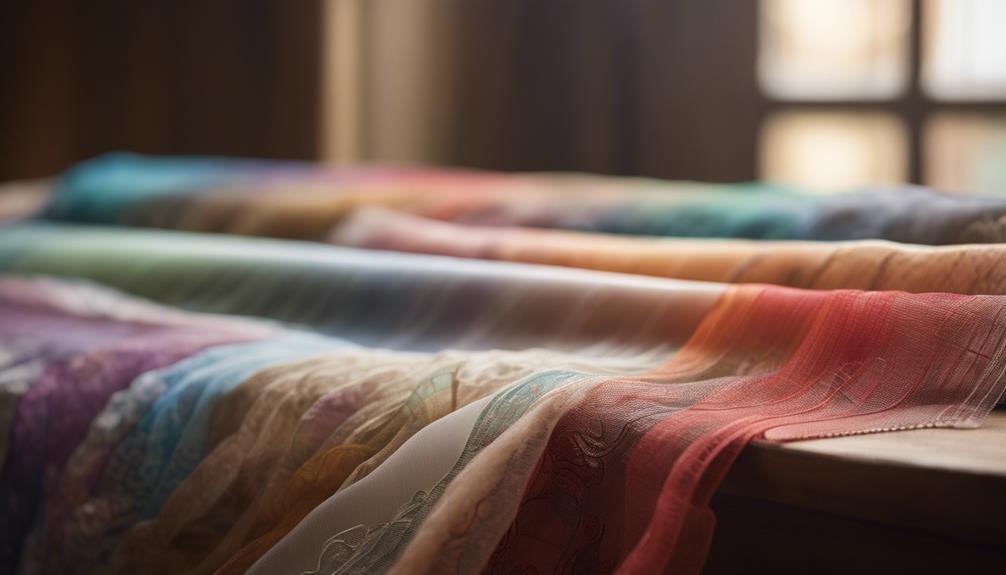
In recent years, the world of voile fabric has seen exciting shifts, particularly with the rising demand for sustainable fashion. You'll find that eco-friendly materials are becoming increasingly popular, as consumers prioritize sustainable practices in their fabric choices. Cotton fabrics, especially cotton-rayon blends, are gaining traction due to their comfort and durability, appealing to a wide range of tastes.
Unique prints and solid colors are key selling points in today's market. Retailers like Pink Hollybush are stepping up with fashionable designs that cater to diverse preferences. This colorful variety allows you to express your creativity in your sewing projects.
Moreover, the resurgence of home sewing since the 2000s has spurred fabric production, leading quilting companies to offer a range of substrates, including voiles. However, you should be mindful of quality. Concerns regarding high-quality voiles from manufacturers like Art Gallery Fabrics have prompted careful selection of fabric sources. As you explore the current trends in voile fabric, keep an eye out for sustainable options that not only look good but also align with your values!
Frequently Asked Questions
What Are the Characteristics of Voile?
Voile features a lightweight, semi-sheer texture with a soft drape. You'll notice its higher thread count and tighter weave, making it feel silky. It's stable and non-stretchy, perfect for layering or lightweight curtains.
What Does Voile Material Look Like?
Voile material's lightweight and semi-sheer appearance lets light filter through, creating a soft glow. You'll notice its silky texture and smooth finish, often available in vibrant colors and prints that catch your eye.
What Does Voile Material Feel Like?
You'll notice that voile feels soft and silky against your skin. Its lightweight, semi-sheer texture drapes elegantly, while the slightly cool touch makes it perfect for warm weather, ensuring comfort without bulk in your outfits.
What Is the Difference Between Voile and Crushed Voile?
Voile's smooth, elegant drape contrasts with crushed voile's wrinkled texture. While voile offers a sheer finish, crushed voile provides more opacity and a relaxed feel, making it perfect for casual styles. Choose based on your needs!
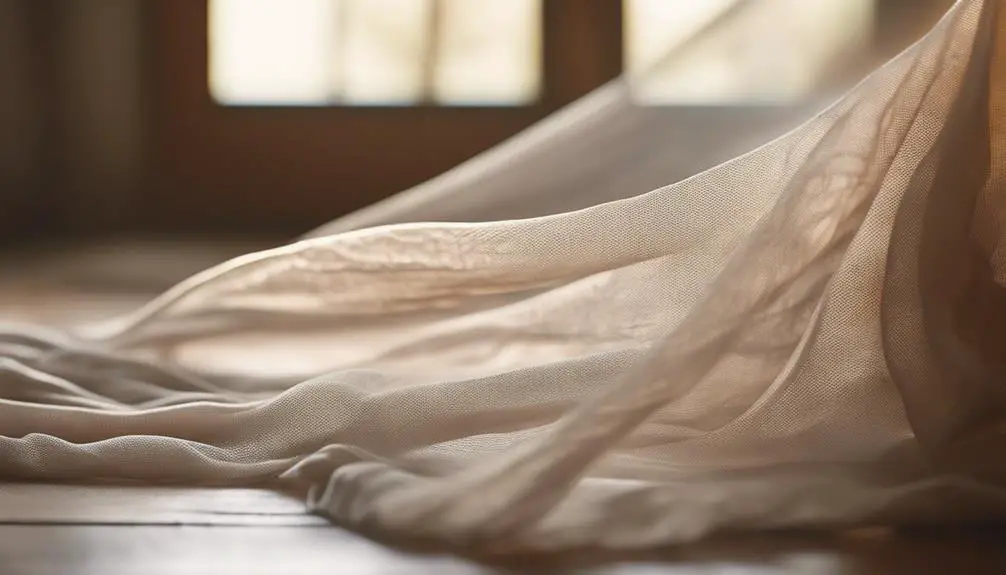

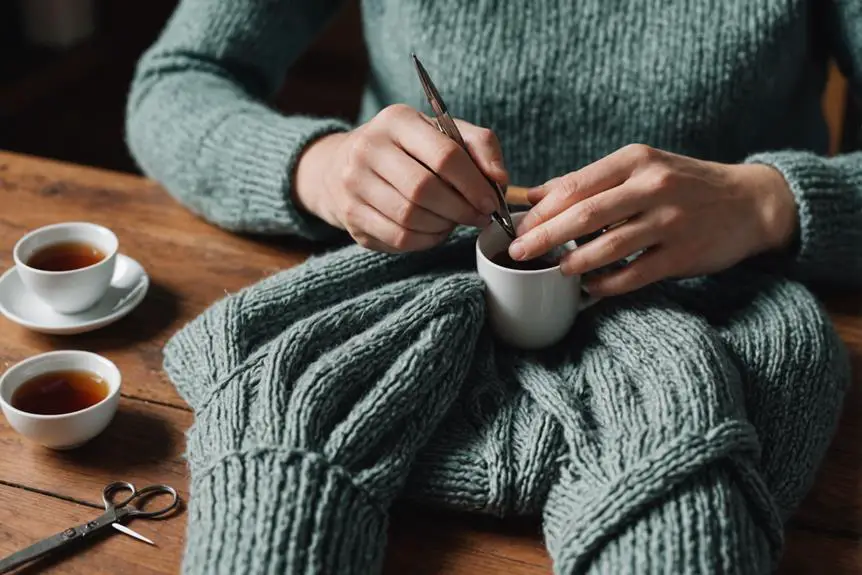

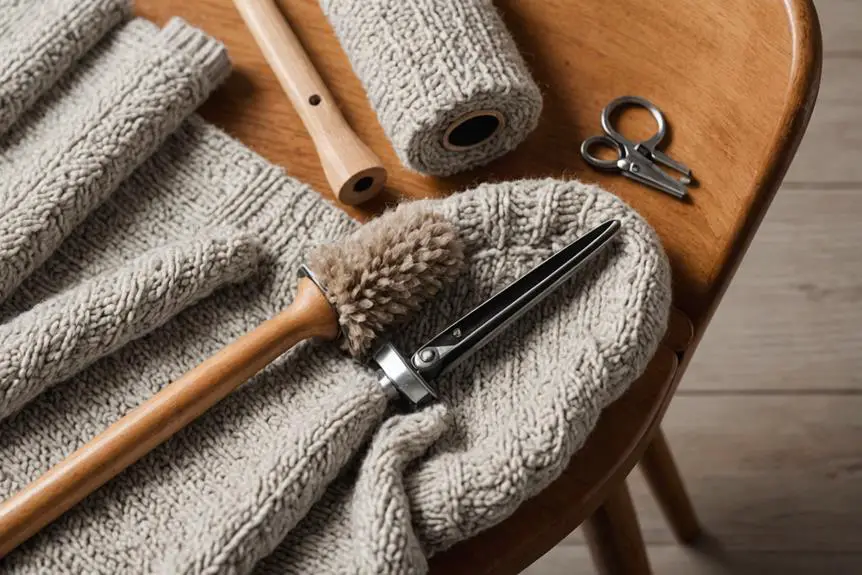
Its such as you read my mind! You appear to know so much about this,
such as you wrote the guide in it or something.
I believe that you just can do with a few percent to power
the message house a little bit, however other than that, that
is excellent blog. An excellent read. I will definitely be
back.
Thank you for some other excellent article. Where else may just anybody get
that kind of information in such a perfect way of writing?
I’ve a presentation subsequent week, and I’m at the search for such info.
I do agree with all of the ideas you have offfered on your post.
They’re very convincing and will definitely work.
Nonetheless, the posts are too quick for beginners.
May just you please lengthen them a bit from subsequent time?
Thanks for the post.
Why people still make use of to read news papers when in this technological world everything is presented on net?